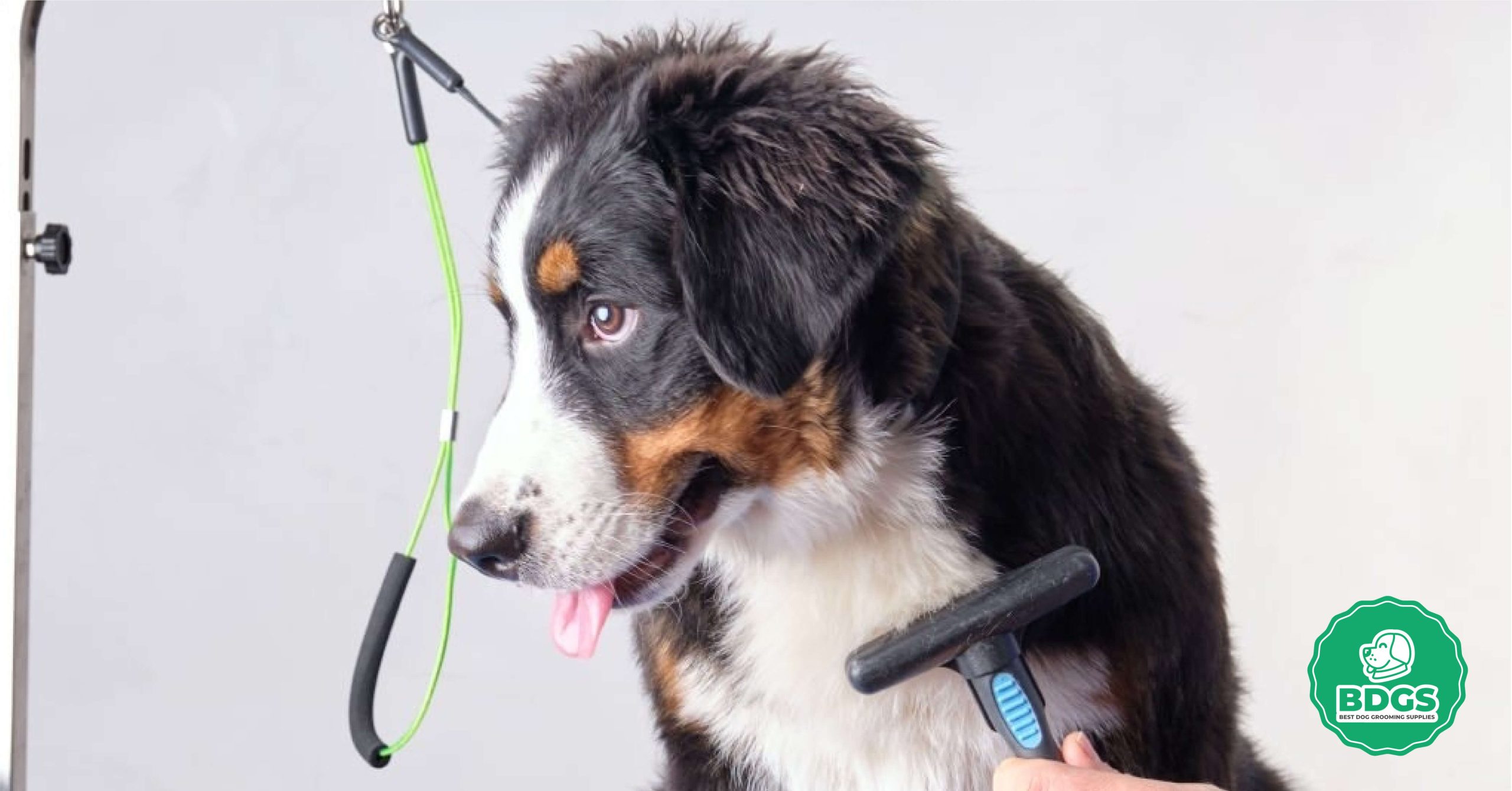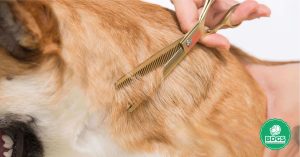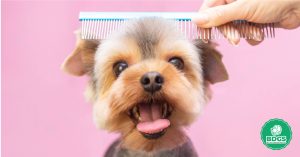Do you have a dog and want to know a quick and easy way to keep its fur healthy and looking good? The powder rake is the only thing you need. Anyone who owns a dog needs this helpful cleaning tool. It’s essential for people whose dogs have thick undercoats, like huskies or golden retrievers. An undercoat rake is made to help you deal with your dog’s loose, twisted fur under its covering. It keeps your pet’s fur from getting matted or knotted, which can be uncomfortable for them.
A fur rake is easy to use and is suitable for your dog’s health in many ways. Using a hair brush to clean your dog regularly can reduce shedding, lower the risk of skin problems, and keep your dog cool and comfortable, especially in the summer. We’ll talk about the benefits of using a hair rake, the best ones for different dog breeds, and how to use this cleaning tool correctly in this guide. With the undercoat brush, you can get rid of those annoying mats and give your dog a happy, clean coat.
What is the type of undercoat rake?
There are different kinds of undercoat rakes for other dog breeds and their cleaning needs. Most people have one of these types:
- Single-Row Undercoat Rake: This type has one row of tiny metal teeth that are very close together. It’s great for dogs with fine or short undercoats because it can eliminate free fur and keep mats from forming.
- Double-Row Undercoat Rake: This type of undercoat rake has two rows of teeth to work over a more extensive area with each pass. It works for dogs like huskies and collies whose undercoats are thicker or heavier.
- Mat Breaker or Dematting Rake: This special undercoat rake removes rugged mats and tangles in your dog’s fur. It has teeth or blades that are very sharp and can carefully cut through mats, making them easier to break up.
- Shedding Blade: A shedding blade is a flat, comprehensive tool with sharpened edges. It could be a better rake. It helps remove loose fur, especially when animals shed a lot.
- Slicker Brush with Rake: On one side of some brushes, there is a slicker brush, and on the other, there is a rake. This tool is handy because it lets you brush your dog’s coat and remove undercoat fur simultaneously.
What is the size of the dog for the Undercoat rake?
When picking out a fur rake, the dog’s size is essential. It would help if you thought about both the breed of dog and the thickness of its coat:
- Small Dogs: A small or medium-sized hair rake is generally enough for small dog types with fine or short undercoats. Dachshunds, Chihuahuas, and Beagles are a few of these breeds.
- Medium Dogs: Labrador Retrievers, Bulldogs, and Cocker Spaniels are examples of dogs with moderately thick coats that can use medium-sized hair rakes.
- Large Dogs: Golden Retrievers, Huskies, and German Shepherds are all large dog types with thick undercoats that may need a more giant or heavier-duty undercoat rake to get rid of free fur.
- Extra-Large Dogs: The undercoats of giant breeds like Saint Bernards and Newfoundlands tend to be thick. In this case, you should choose an extra-large hair rake that is well-made.
What is the pin length for the pet undercoat rake?
The undercoat rake pin length tells you how long the metal teeth or pins are on the head of the rake. It’s an important thing to think about when picking out a fur rake for your dog. Know this:
- Short Pins: Undercoat rakes with short pins are suitable for dogs whose undercoats are fine or short. No harm will come to your dog’s skin as these pins can reach into the undercoat and pull out loose fur. Dogs like Beagles and Dachshunds do well with them.
- Medium Pins: Undercoat rakes with pins that are about mid-length can be used on dogs with coats of different lengths and thicknesses. They do an excellent job of removing undercoat fur while being gentle on the skin. Medium pins can be good for Labrador Retrievers and Cocker Spaniels.
- Long Pins: Undercoat rakes with long pins work best for dogs like Huskies and Golden Retrievers with thick or double coats. The longer pins can get deep into the undercoat to remove extra fur and cut down on shedding.
What is the pin spacing for the undercoat rake?
The pin spacing of a coating rake is the space between the pins or metal teeth on the head of the rake. It’s an important thing to think about when picking out the right fur rake for cleaning your dog. Know this:
- Wide Pin Spacing: Undercoat rakes with vast space between pins are suitable for dogs with thick or double coats. The rake can go deeper into the undercoat because the pins are farther apart. It makes it easier to remove free fur and cuts down on shedding. Wide pin spacing is suitable for dog breeds like Huskies and Alaskan Malamutes.
- Medium Pin Spacing: Undercoat rakes with large pin spacing are flexible and can be used on dogs with coats of different lengths and thicknesses. These are good because they remove the undercoat fur well and are gentle on the skin. Dogs such as Labrador Retrievers and Golden Retrievers are better suited to medium pin spacing.
- Narrow Pin Spacing: Undercoat rakes with few pin gaps work best for dogs whose undercoats are fine or short. The closer pins help keep the finish from getting damaged while still getting rid of free fur. Some dog breeds, like Beagles and Dachshunds, may like pins that are close together.
What is the handle design for the undercoat rake?
A rake’s handle design tells you what materials were used and how the handle is made. The shape of the handle is essential for your Comfort and ease of use when cleaning your dog. Here are a few popular types of handles:
- Ergonomic Handle: An ergonomic handle is made to cradle your hand easily. It’s often shaped like a curve and can be made of foam or soft, non-slip materials. This shape keeps your hands from getting tired and gives you a good grip, which makes it easier to brush your dog for a long time.
- Straight Handle: Coat rakes with straight handles look straightforward. They’re simple to hold and move, but they might be better for your back than curved grips. If you like classic styles, these are a good pick.
- Rotating Handle: Some hair rakes have a spinning or swivel handle that lets the rake’s head move separately from the handle. This shape can make it easier to clean places that are hard to get to and put less stress on your wrist.
- Wooden Handle: When you buy an undercoat brush with a wooden handle, it looks classic and natural. Some practical features of other materials may be absent in these. Still, they can be easy to hold and offer a standard grooming experience.
What is the purpose of the undercoat rake?
You can use an undercoat rake to help keep your dog’s coat healthy and soft. This cleaning tool does a few essential things:
- Remove Loose Fur: A hair rake is made to remove the dead, loose fur that can build up in your dog’s layer. It keeps the hair from matting and tangling and stops it from shedding.
- Prevent matting: matted fur gets twisted and knotted. If you regularly use a hair rake, you can keep these mats from growing. If they do, your dog may feel uncomfortable and hurt.
- Improve Air Circulation: Getting rid of your dog’s extra undercoat fur lets more airflow, which keeps him cooler in hot weather and lowers the risk of skin problems.
- Maintain Coat Health: Using an undercoat rake to groom your dog’s fur helps spread natural oils through the skin, making it look healthier and shiny.
- Bonding and Comfort: Using a hair brush to groom your dog can be a fun way to spend time together, and it can also help you see if any skin problems need to be fixed.
What is the budget for the undercoat rake?
The undercoat rake price can change based on brand, quality, and features. Most of the time, good hair rakes cost between $10 and $30. Some simple models maybe even less expensive, but more expensive models or ones that are made just for you may be available.
Here’s a general idea:
- Low Budget: Simple powder rakes can be found for about $10 to $15 if you’re on a tight budget. These are easy to use and do the job, but they might have some of the latest features.
- Mid-Range: Undercoat rakes in this range are better built and have more comfortable handles. They cost about $20 to $25. These are good for most dog lovers.
- High-End: A high-end powder brush from a well-known brand or one with unique features can cost $30 or more. These are great for professional dog groomers or owners with special needs.
What is the drawback of the undercoat rake?
Even though hair rakes are helpful for cleaning, there are some things to think about before using them:
- Not Suitable for All Coat Types: Undercoat rakes work best on dogs with thick undercoats or double coats. If your dog only has one skin or a skinny layer, you might not need an undercoat rake, or it could hurt their coat.
- Potential for Over-Grooming: If you use the hair rake too often or roughly, you might be over-grooming, which could hurt or irritate the skin. Be careful when you use the tool, and don’t put too much pressure on it.
- Not Ideal for Removing Topcoat Fur: Undercoat rakes are made for the undercoat. You might need a different brush or comb to remove loose fur on the covering if these aren’t the best tools for the job.
- Requires Regular Maintenance: Undercoat rakes must be cleaned and cared for to keep working well. Not getting rid of the fur stuck in the pins can make them less effective over time.
- May Be Uncomfortable for Some Dogs: Some dogs might not like being groomed with a fur rake. Most dogs don’t mind, but some might find it painful or unpleasant. It’s best to slowly introduce the tool and make sure your dog is comfy while being groomed.
Buyer’s Guide: How to Buy an Undercoat Rake for Your Dog
It would help to have an undercoat rake when you clean your dog to keep his coat healthy and soft. Here are some easy steps you can follow to find the right one for your pet:
- 1. Consider Your Dog’s Coat Type: First, think about the hair on your dog. What kind of coat does your dog have? Is it heavy, thin, or a mix of the two? For the best results, pick a hair rake that works with the type of coat your dog has.
- 2. Check the Pin Length and Spacing: Pay attention to how far apart and how long the pins are. To get through thick clothing, you should use long pins instead of short ones. It’s best to have wide pin spacing for double coats and narrow pin spacing for fine undercoats.
- 3. Think About Size: It’s also essential to know what size powder rake you use. Rakes for small dogs should be small, and big dogs should be prominent. Make sure the rake is the right size for your dog.
- 4. Handle Comfort: Think about how the handle is made. If you’ll be cleaning a lot, look for a hair rake with a handle that is easy on the hands. It will feel better and keep your hands from getting tired.
- 5. Budget: Set a budget for yourself. Overcoat rakes are priced in a range of amounts. Many prices will let you find a good one for your needs. Pick one that fits your budget.
- 6. Read Reviews: Read what other dog owners have said about it before you decide. They can explain how well a fur rake works and whether it suits your dog.
- 7. Start Gently: When you get your hair rake, clean your dog slowly and gently. It ensures your dog has a good time while grooming and helps it get used to the tool.
Frequently Asked Questions
Using an undercoat rake is relatively straightforward:
Start with a dog that is clean and dry.
Hold the undercoat rake in your hand and run it slowly through your dog’s fur, being careful to reach the undercoat.
Don’t hurt the face, and always work toward hair growth.
Be gentle, and if you come across any mats or tangles, work on them slowly so you don’t pull or hurt your dog.
To make sure you cover the whole coat, brush in parts.
The undercoat rake removes dead and free fur in a dog’s layer. It helps keep the hair healthy, stops mats from forming, and reduces waste. It works great for dogs with thick undercoats or double coats.
An undercoat rake removes loose and dead fur from a dog’s undercoat. It helps reduce shedding, prevent matting, improve air circulation, and maintain a healthy coat. It’s beneficial for dogs with double coats or thick undercoats.
How often you use it will depend on the breed of your dog, how thick its coat is, and the season. A good starting point is to use a powder rake every one to two weeks. You might need to use it more often when your pet sheds a lot, but for some breeds, once a month may be enough.
The main difference is in their design and purpose:
Undercoat Rake: This tool is made to get to the undercoat and remove any free fur, which helps keep the coat from sticking and shedding. Its teeth or pins are very close together.
Shedding Blade: It is a flat tool with sharpened edges that removes loose fur from the coats. It is not meant to reach the undercoat. It works excellent on short-haired types and can even be used on wet hair.
Yes, hair rakes can reduce shedding by removing free fur in the undercoat. Using it regularly can help reduce the free hair your dog sheds around the house. It will keep their coat healthy and more comfy.




